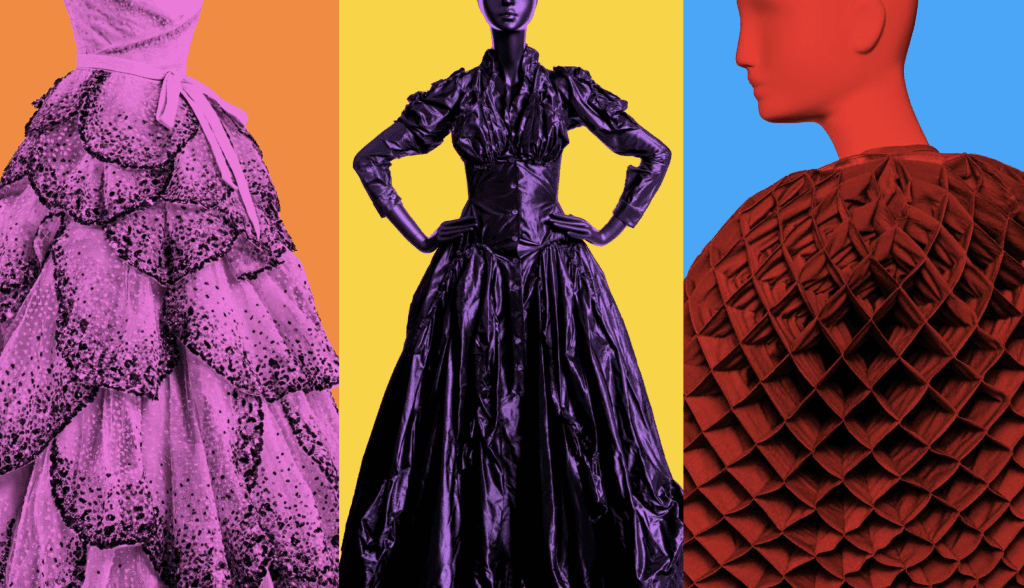
Ever since wealthy Romans draped themselves in impractical togas adorned with a purple border as a status symbol, the styles worn by some have been designed to wordlessly speak to others.
In 2024, showcasing fashion has never been so fashionable, whether connected to music, entertainment, or sports. A television audience of nearly 17 million—one-third more viewers than in 2023—tuned in to the 66th Annual Grammy Awards®, checking out cringe-worthy cutouts, tacky transparent gowns, garish green feathers, and wannabe Vegas showgirl get-ups on the red carpet. Some dazzled, others simply confused us. Either way, we’re fascinated by fashion … and the fashion story thread doesn’t only wind its way around Los Angeles, New York, London, Paris, and Milan.
| “The Fine Arts Museums’ costume collection is one of the strongest in the country, advanced over decades by generous gifts from Bay Area residents. Likewise, the museum is renowned for its vibrant and wide-ranging fashion exhibitions. As the city’s museum, we are now thrilled to present stunning selections from our costume collection in an exhibition that examines the city’s evolving style ethos. “Fashioning San Francisco”is a rich presentation that asserts the case that San Francisco does, and has always had, style.” – Thomas P. Campbell, Director and CEO, Fine Arts Museums of San Francisco |
Fascinated by Fashion
Indeed, our 21st century fascination with fashion has grown to blockbuster proportions. Bigger than the Treasures of Tutankhamen and more popular than the Mona Lisa on tour, the exhibition “Heavenly Bodies: Fashion and the Catholic Imagination” broke all-time attendance records at the Metropolitan Museum of Art, attracting more than 1.65 million visitors in 2018. At the Victoria and Albert Museum in London, where the show “Gabrielle Chanel: Fashion Manifesto” recently extended its run by popular demand, “Christian Dior: Designer of Dreams” staged in 2019 was the museum’s best-attended show ever.
Closer to home, in the first major exhibition staged from the museum’s notable costume collection in over 35 years, more than 100 pieces “reflect San Francisco’s long-standing tradition of self-expression through fashion,” according to Fine Art Museums of San Francisco. Shaped by generous gifts from patrons of the arts, many of this exhibition’s garments were actually worn to events on the city’s vibrant social and cultural calendar.
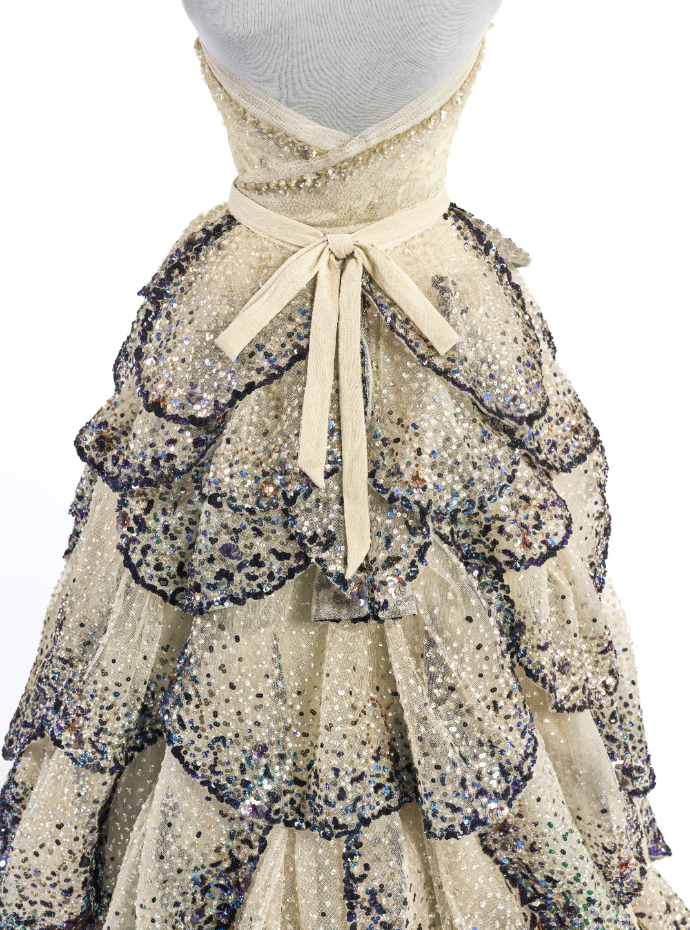
Glittering Sequins, Diaphanous Layers of Silk Tulle
At the de Young through August 11, “Fashioning San Francisco: A Century of Style” displays designs from European haute couture stalwarts such as Yves Saint Laurent, Valentino, Pierre Balmain, and Karl Lagerfeld. Sister centerpieces of the exhibition are Christian Dior gowns donated by I. Magnin & Company in 1949, both named for Roman goddesses: Junon, a peacock-inspired dress, and Venus, a mermaid-like vision.
Genius showmanship is on view from designers who pushed the envelope: John Galliano, Jean Paul Gaultier, Christian Lacroix, and Alexander McQueen. San Francisco has long been a place of experimentation, so the exhibition’s spotlight also shines on Japanese avant-garde creators such as Kenzō Takada, Issey Miyake, Hanae Mori, Yohji Yamamoto, and Rei Kawakubo.
The exhibition draws mainly from the significant costume collections of the Fine Arts Museums of San Francisco, including a robust wardrobe of notable ensembles generously donated by Bay Area women collectors and philanthropists. Organized in seven sections, themes define the exhibition: Re-Asserting Identity, The Little Black Dress, After the Ball, Global Aesthetic Influences, Well-Suited, Avant-Garde, and Best Foot Forward.
Puttin’ on the Ritz
Chronologically, the exhibition commences in the early 20th century. Built for 2024 sensibilities, “Fashioning San Francisco” brings the city into the galleries via a 60-minute soundtrack and viewers into the collection via playful augmented reality mirrors that allow visitors to “wear” three items of apparel, thanks to interactive tech in partnership with Snap Inc. In addition to garments by Saint Laurent and Valentino, one can “try on” an evening ensemble exemplifying wearable art-as-fashion by San Francisco Chinatown native Kaisik Wong (1950-1990), a close friend and collaborator of Salvador Dalí.
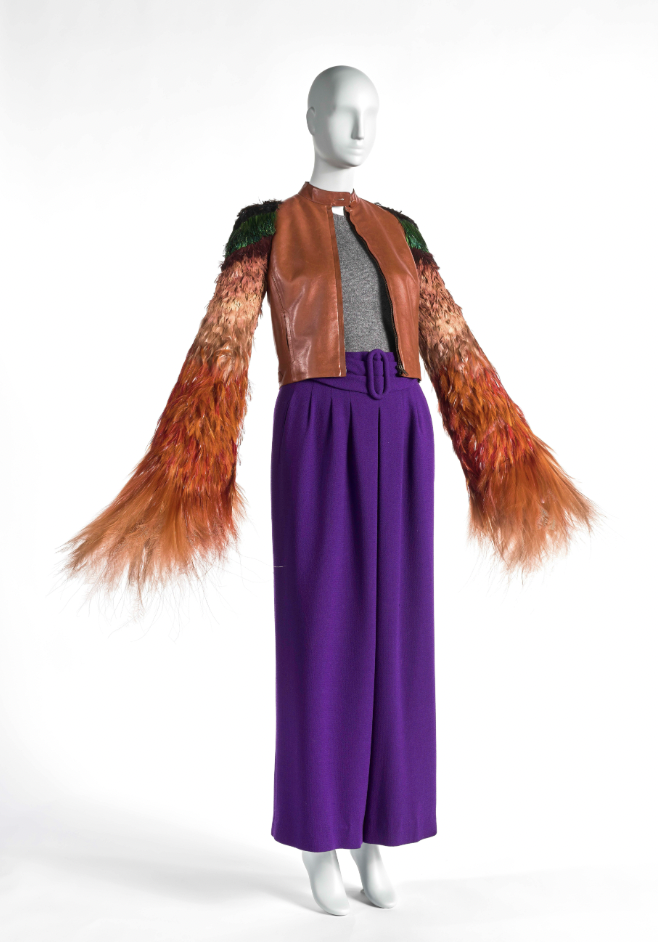
A Phoenix Rises
Let’s rewind to the dawn of California. Everything changed in 1848, when the discovery of gold in the Sacramento Valley delivered a big boost for America’s money supply, rapidly infused 300,000 new residents, and fast-tracked statehood. Almost overnight, San Francisco gained prominence, transforming itself from shanty town to boom town. Within a decade, the silver rush followed. And by 1869, the first transcontinental railroad was completed. San Francisco developed into a leading banking and cultural metropolis, breaking into the top 10 ranks of the nation’s most populous cities.
A rising phoenix emblem featured on the first official seal of San Francisco in 1852. Spirited fashion-related entrepreneurship and enterprise took root. The city’s first retail outlet was J. W. Davidson Dry Goods Store, selling fabric, thread, and clothing, which opened in 1854 and later changed its name to The White House. That former home at Sutter and Grant became Banana Republic, a subsidiary of the San Francisco parent company, Gap Inc.
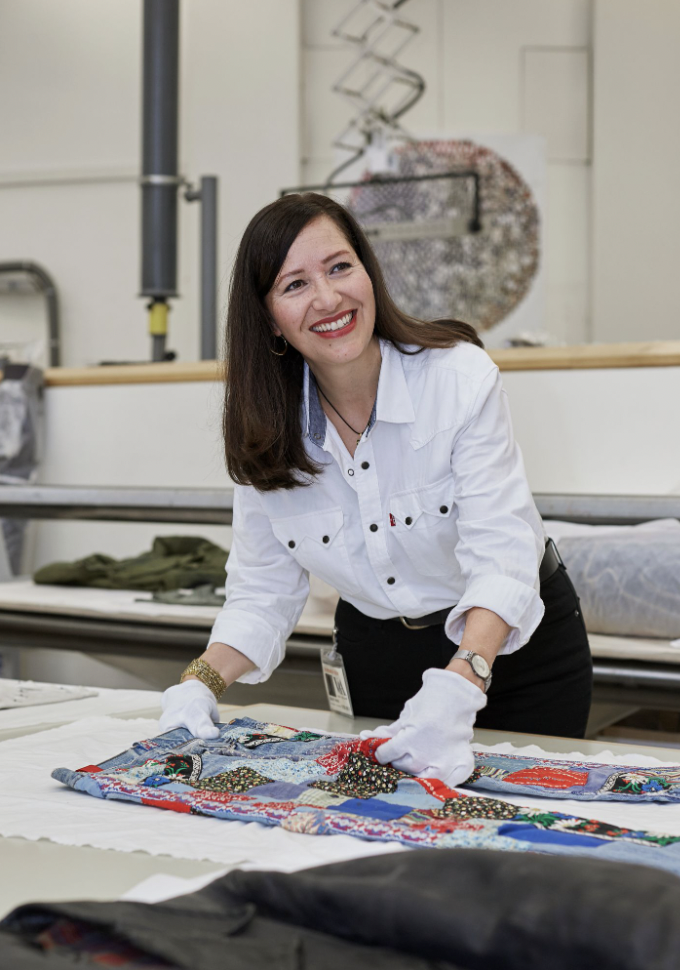
Innovation took root in the fast-growing city. Tracey Panek, Historian for Levi Strauss & Co.and Director of Archives at the company’s world headquarters in San Francisco explains, “Levi Strauss & Co. began manufacturing the modern blue jean or riveted denim pant in 1873 inSan Francisco.Invented as a tough work pant, Levi’s® and blue jeans transformed fashion, andtoday are a global garment worn by people of all ages and backgrounds all over the world.”
When Strauss donated $5 to a local orphanage (the equivalent of $110 today) just one year after arriving from Germany, his gesture began the company’s tradition of sharing its prosperity with the community. With 3,200 brand-dedicated stores and shop-in-shops worldwide, the blue jeans giant was valued at $8.6 billion when it went public in 2019.
The newly founded specialty goods store I. Magnin was among the first to import European couture and high-end fabrics starting in 1876—a successful venture until the 1906 earthquake struck and everything changed once again.
The New San Francisco
Within several days after the flames sparked by the Great Earthquake and Fire had been extinguished, 35 prosperous merchants had pledged themselves to San Francisco’s rebuilding effort. In the aftermath of the disaster that had destroyed 80 percent of the city, thousands needed new home furnishings, clothing, and shoes.
The opening of the Panama Canal expanded trade from the west, further boosting prosperity. By 1915, the Panama–Pacific International Exposition accomplished a repositioning that turned the “New San Francisco” into a thriving West Coast fashion hub. At the same time, looking to Eastern influences, the rebirth of Chinatown engaged positive perceptions of ethnicity and aesthetics, with purveyors like Gump’s supplying products of artistic distinction.
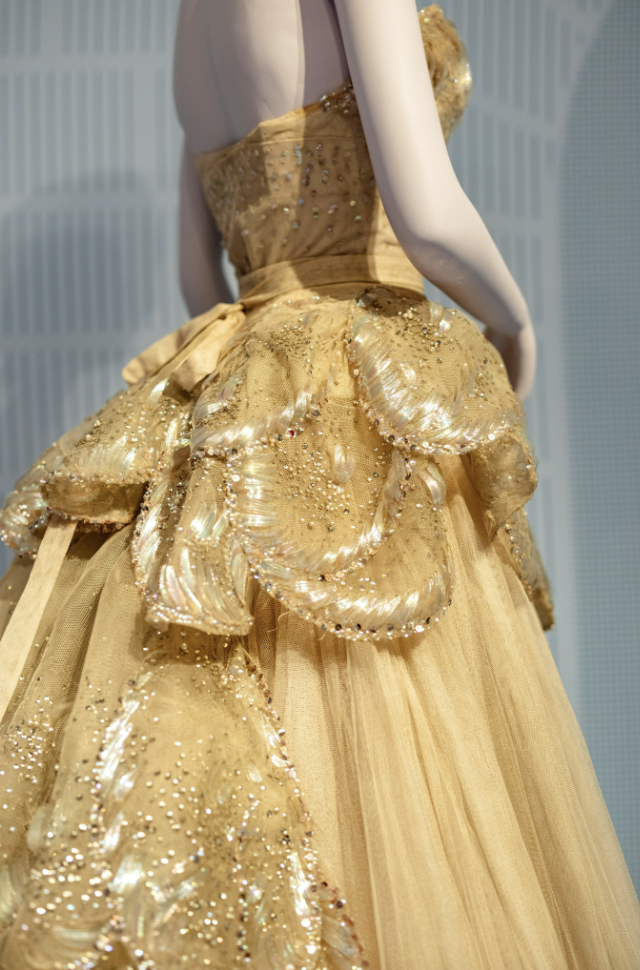
Museum, San Francisco, 2024. Photograph by Randy Dodson. Image courtesy of the Fine Arts Museums of San Francisco
The Golden Age of Department Stores
Like a love letter to the influential and confident women who shaped a bygone era, two charming sections of the museum exhibition are dedicated to the little black dress and the power suit. Following World War II, downtown San Francisco was at its most stylish; magnificent stores dotted around Union Square were fashion and lifestyle magnets. Nearby on Market Street, The Emporium was a popular destination where the rotunda has been preserved inside San Francisco Shopping Centre, formerly Westfield.
When rebuilt in Union Square, the City of Paris featured a (still extant) dramatic rotunda and stained glass dome to resemble Galeries Lafayette and was topped by a replica of the Eiffel Tower.
Today, at the store sited on that enviable corner, Vice President General Manager Lin Huber says “Neiman Marcus has a deep-rooted history with the City of San Francisco that dates back to 1983. Since we first opened our doors, we have committed ourselves to being the beacon of style, excellence, and philanthropy in the area. Our company leads with love in everything that we do, including serving the communities in which we live and operate. We look forward to continuing to strengthen our relationships with our local customers and give back to our community.”
famsf.org/exhibitions/fashioning-san-francisco
| “I hope people who view the exhibit will be so excited about San Francisco as a place and the different style narratives that we have here. I hope people are surprised and see that San Francisco has always been an international player in the field of fashion history.” – Laura L. Camerlengo, Curator in Charge of Costume and Textile Arts at Fine Arts Museums of San Francisco |
***
Complementing “Fashioning San Francisco: A Century of Style” is a contemporaneous exhibition at the de Young through July 21, 2024. Titled “Irving Penn,” the show of 175 photographs celebrates the lifelong career of one of the 20th century’s groundbreaking photographers, and one of Vogue® magazine’s most prolific. Using minimalist neutral backgrounds, Penn (1917–2009) revolutionized fashion photography by emphasizing models’ personalities through gestures and expressions.
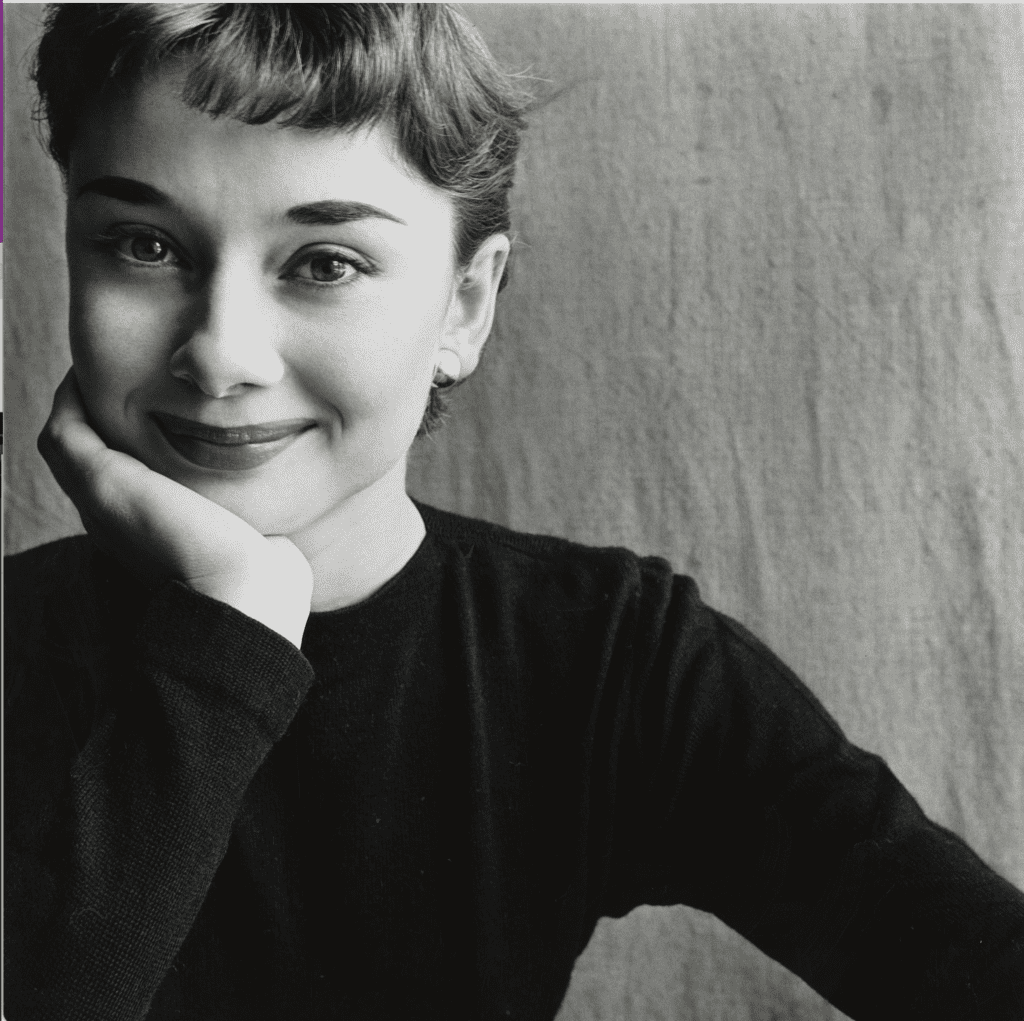
He covered collections by his favorite designers, such as John Galliano for Dior, Karl Lagerfeld for Chanel, and Christian Lacroix, and captured timeless black and white portraits of 20th century icons from Marlene Dietrich and Sophia Loren to Alfred Hitchcock and JFK.
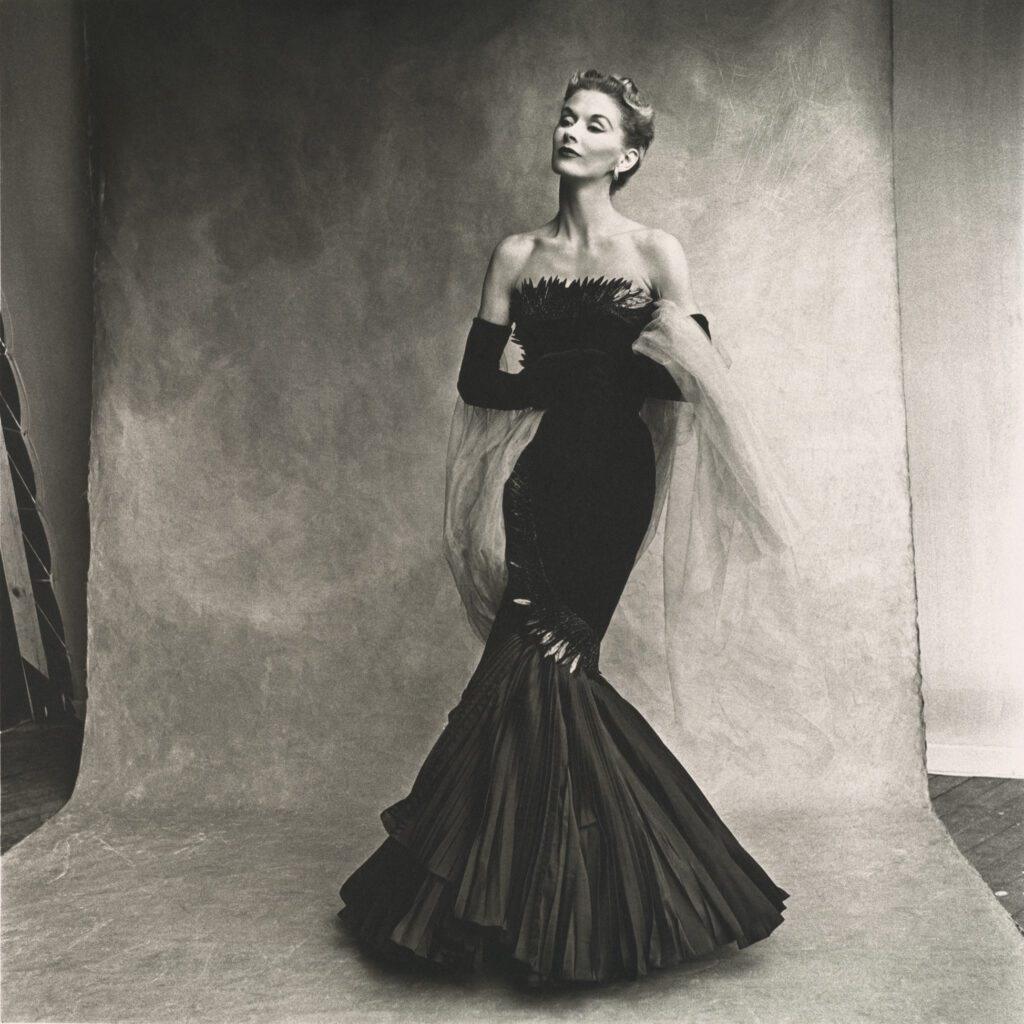
Platinum palladium print.Image: 19 7/8 x 19 11/16 in. (50.5 x 50 cm).
The Metropolitan Museum of Art, Promised
Gift of The Irving Penn Foundation. © Condé Nast
In 1967, commissioned by Look magazine, Penn traveled to San Francisco to record the Summer of Love, photographing Hells Angels, hippie communities, local rock bands the Grateful Dead and Big Brother and the Holding Company, and members of the avant-garde San Francisco Dancers’ Workshop, memorializing the defining counterculture movement of the 1960s on film.
